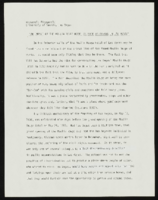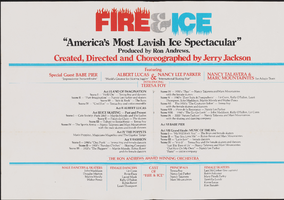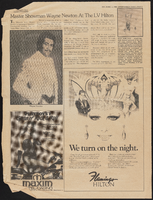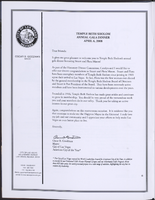Search the Special Collections and Archives Portal
Search Results
Jackson, Jerry
Born January 14, 1936 in Tulsa, Oklahoma, Jerry Reese Jackson has worked as a show producer, director, costume designer, choreographer, lyricist, and composer. In Las Vegas, Nevada, Jackson is best known for his work on the Folies-Bergère at the Tropicana Hotel and Casino where he served as artistic director, choreographer, and later as costume designer for nearly thirty-five years, beginning in 1975 and ending with the show's closure in 2009.
Person
Hank Henry Papers
Identifier
Abstract
The Hank Henry Papers consist of materials on the entertainment career of Hank Henry from 1934 to 1980. The collection contains skits and jokes, family photographs, photographs of burlesque shows, photographs and autographs of various actors and actresses, newsletters, newspaper articles and correspondence.
Archival Collection
Demolition of original Stardust lodging structure: video
Date
Archival Collection
Description
Moving Image


Patrick P. Keenan interview, February 28, 1977: transcript
Date
Archival Collection
Description
On February 28th, 1977, collector Clyde C. Caldwell interviewed Patrick P. Keenan (born January 24th, 1905 in New York) at his house in Henderson, Nevada. Mr. Keenan discusses Las Vegas and Henderson in the 1950s. He also speaks about working on the Strip and the changes he has seen in Las Vegas over time.
Text

Maria Benítez oral history interview: transcript
Date
Archival Collection
Description
Oral history interview with Maria Benítez conducted by Monserrath Hernández and Maribel Estrada Calderón on June 21, 2019 for the Latinx Voices of Southern Nevada Oral History Project. Maria Benítez is the image of a hardworking and determined Salvadoran woman. After facing adversity amidst the Salvadorian Civil War she talks about her journey as a nurse in El Salvador and migrating to the United States. Here in Las Vegas, she has worked as a cook on the Strip, been an active member of her church, and supported the education of her children selling pupusas. Subjects discussed include: El Salvador, Salvadorian Civil War, Migration, US Citizenship Documentation, and Judaism.
Text

"An Impact of the Moulin Rouge Hotel on Race Relations in Las Vegas": manuscript draft by Roosevelt Fitzgerald
Date
Archival Collection
Description
From the Roosevelt Fitzgerald Professional Papers (MS-01082) -- Unpublished manuscripts file.
Text



